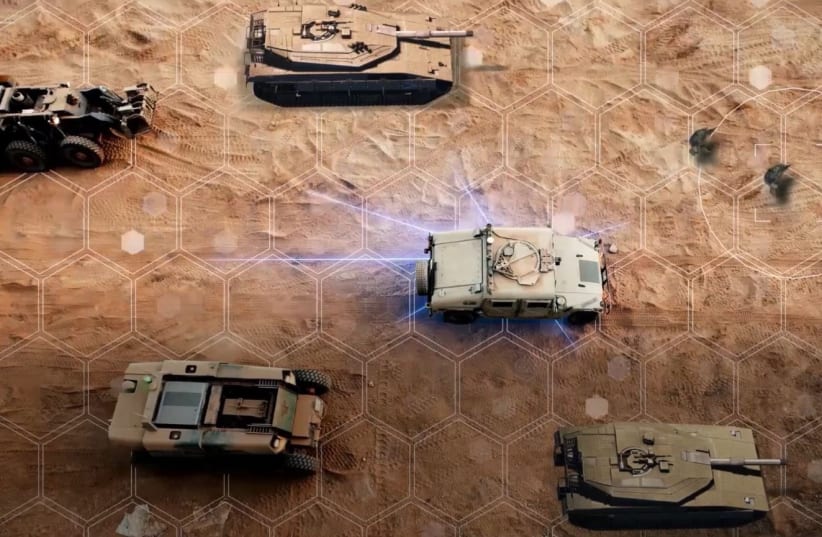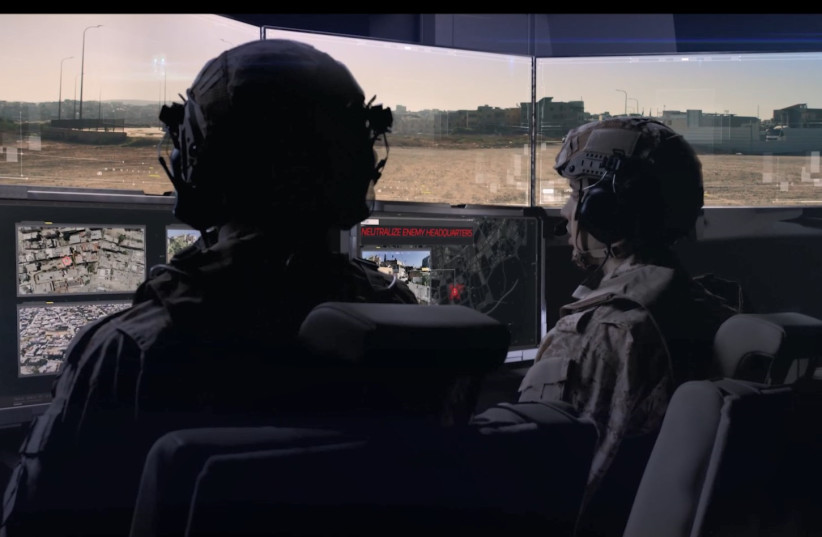The Defense Ministry selected Israel Aerospace Industries as the prime contractor for the next phase of developing and integrating technological platforms for the Carmel future armored fighting vehicle (AFV).
The concept of the Carmel program, which is conducted in cooperation with the IDF’s Ground Forces and the Tank and APC Directorate, is to significantly improve maneuvering capabilities.
Designed to play a lead role on the future battlefield, the combat vehicle of the future takes artificial intelligence capabilities that enable full situational awareness and fast responses to enemy threats while drastically reducing the workload of the crew.
With numerous sensors and cameras, the Carmel allows the crew to order autonomous actions, such as searching for several enemy targets simultaneously and then prioritizing the targets and off-road driving.
Drawing lessons from 2014’s Operation Protective Edge, in which IDF soldiers fought in narrow streets and alleys in the Gaza Strip, the 35-ton, tracked AFV is designed to be simple to operate, relatively inexpensive, agile and lethal with firepower designed for close and urban combat.
Operated by a two-man crew, the AFV is almost completely autonomous and is highly invisible to enemy radar. The platform has breakthrough technologies including modular transparent armor, next-generation cooperative active protection, an IED alert and neutralization system, as well as a hybrid engine.
It is also fitted with tactical drones that can help with surveillance and reconnaissance and attack capabilities. The Carmel will also include an entirely new generation of active protection and will allow the two-man crew to operate in closed hatches while still seeing the entire battlefield.
Launched in 2016, the Carmel is expected to be at the forefront of the military’s new combat concept, which is based on autonomous and automatic maneuvering capabilities, artificial intelligence, hybrid propulsion and more.
It will be applied to current and future armored fighting vehicles and will include crew members in closed hatches, operating a range of autonomous and AI-driven platforms. Many of its capabilities will be autonomous, including travel, detection of threats, defense and acquisition of targets.
With the Carmel’s innovative user interface, soldiers in the vehicle will be able to view the battlefield in several dimensions. They will receive intelligence, detect threats and acquire targets automatically, enabling them to effectively assess situations and make optimal decisions.
Using small crews and relying extensively on autonomous capabilities and AI, battle management will be streamlined and the risk to human life will be significantly reduced.
During the pilot stage of the program, Carmel technologies will be integrated into the Eitan AFV.
IAI was selected by the Defense Ministry’s Directorate for Defense Research and Development (DDR&D) to lead further development of technologies for the “Carmel” program. The defense giant was chosen following a live demonstration of a two-man, closed-hatched AFV.
“The Carmel concept is groundbreaking on a global scale and has garnered the interest of many international industries and militaries,” the defense ministry said in a statement, adding that “the program combines an innovative operational concept with state-of-the-art technologies, which provide solutions for the future battlefield.
In 2019 three prototypes were unveiled by IAI, RAFAEL Advanced Defense System and Elbit Systems.
IAI presented a platform that combines a panoramic display, individual control screens and a control stick similar to the Xbox gaming console’s joystick. The autonomous capabilities in IAI’s combat vehicle are operated by a central, automatic and autonomous system that integrates the various components of the platform and helps the two-man crew in processing information and focusing on critical threats in order to make effective decisions.
These capabilities allow the team to define, supervise and interfere only when there is a necessity or a need, and enable covering a wider area of concern while effectively meeting the challenges faced by the maneuvering forces.
The system also has the ability to locate and destroy time-sensitive targets with small footprints, through quick acquisition and effective engagement of targets.
Boaz Levy, president and CEO of IAI, said that the solution developed by IAI includes a combination of capabilities, systems, groundbreaking innovation and the connection to AI can be used by the IDF as an “additional strategic capability.”
The platform will also reduce the risk to human lives and transform ground combat strategy, he said.
“The central principles behind the company’s concept of land combat include intelligence gathering and acquisition of targets in the battlefield, conducted autonomously,” Levy said, adding that the “Carmel will enable complex ground operations with less risk to human lives, which will transform ground combat strategy as we know it today.”

